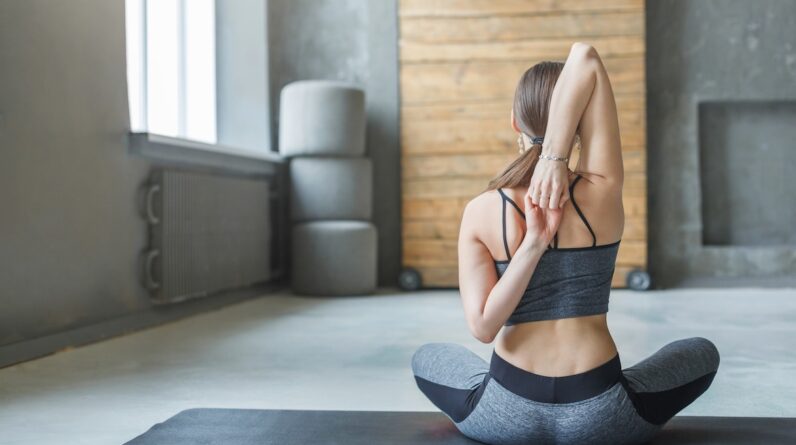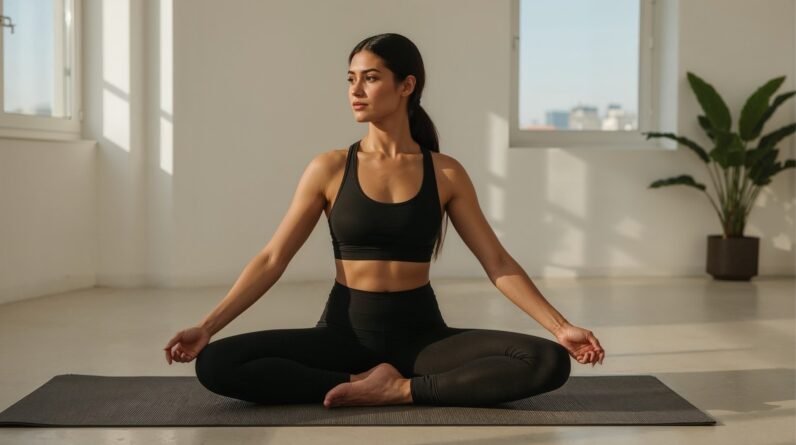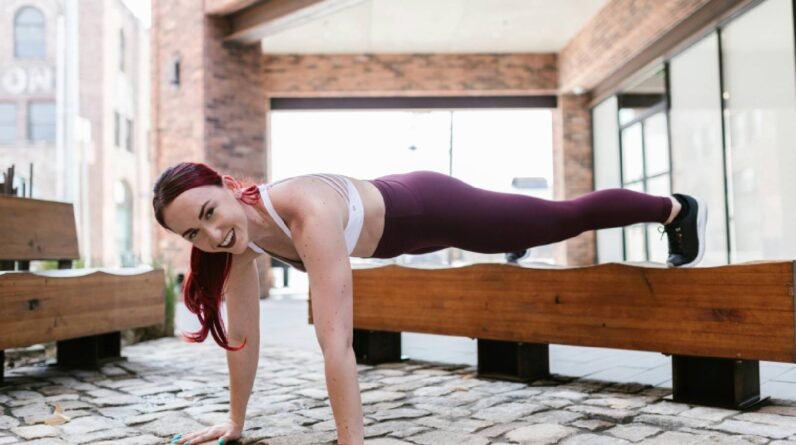
The reason? Having adequate range of motion in all shoulder movement patterns is what allows you to complete even the simplest of actions, says Shannon Keane, PT, DPT, a physical therapist at House of Physical Therapy in New York City.
“Our bodies are not linear, therefore we need to be able to move our shoulders freely to perhaps tuck in a shirt, buckle a seatbelt, eat our food, or maybe even throw a ball,” she explains.
Maintaining full range of motion in your shoulders is also crucial as you age, helping to preserve independence and, according to research1, lower-body functioning and walking endurance capacity.
So how can you gauge if your shoulder mobility is up to snuff—or has plenty of room for improvement? Try the Apley Scratch Test.
What is the Apley Scratch Test?
Simply put, the Apley Scratch Test is an assessment used to determine strengths and weaknesses in all active ranges of motion within the shoulder, Keane says.
In case you don’t know, the shoulder is a ball-and-socket joint that allows for a variety of motions. Think of your elbow: All you can really do from that joint is flexion (bringing your hand up to your shoulder) and extension (straightening your arm) with a little bit of rotation.
But within your shoulder joint, you can flex (lift your arm out in front of you and overhead), extend (raise your arm behind you), abduct (lift your arm out to the side), adduct (draw your arm in toward the center of your body), and externally and internally rotate (rotating your arm), says Andy Fata-Chan, PT, DPT, a physical therapist and the founder of Moment Physical Therapy and Performance in New York City.
“That’s kind of where the Apley Scratch Test comes in,” he explains. “It’s combining a lot of these motions that you’re seeing in isolation, but starting to coordinate a pattern that you actually might use in everyday life.” Think: scratching a nagging itch in the middle of your back or scrubbing your shoulder blades with a loofa.
Physical therapists may utilize this test as a screening tool to decide if a client could benefit from a more thorough shoulder mobility assessment and improvement plan, Keane says. Athletes who require a high level of shoulder mobility, such as tennis, pickleball, or baseball players, will also particularly benefit from checking their shoulder mobility regularly, Fata-Chan adds.
“These are times where you really want to maintain as much shoulder range of motion as possible because if you lose mobility, you end up putting a lot of stress in this small window of range of motion,” he says. “Having a full range of motion, you can distribute that stress to more tissues.”
Still, the Apley Scratch Test can be a worthwhile tool for the average person to assess shoulder mobility, especially because you can easily do it at home, according to the experts.
“Our bodies are not linear, therefore we need to be able to move our shoulders freely to perhaps tuck in a shirt, buckle a seatbelt, eat our food, or maybe even throw a ball.” —Shannon Keane, PT, DPT
How to perform the Apley Scratch Test
The Apley Scratch Test can be performed at home without much hassle, but it can be difficult to see just how much mobility you have if you’re doing it solo (or without a mirror).
If you can’t tell how far apart your fingertips are, try to use landmarks, Keane suggests. Ideally, it shouldn’t be difficult to reach your hand above your hip bone or touch where your bra strap sits, she explains.
You’ll want to avoid warming up before trying the Apley Scratch Test, as it could skew your results; the goal is to gauge your mobility at its baseline, Keane says.
Here, your step-by-step instructions for the Apley Scratch Test, demonstrated by Fata-Chan.
- Stand tall. Lift your right arm above your head.
- Then, bend through your elbow and reach your right hand behind your head toward your left shoulder blade, allowing your shoulder to externally rotate.
- Simultaneously, reach your left arm behind your back, then bend through the elbow and reach your left hand behind your back toward your right shoulder blade, allowing your shoulder to internally rotate.
- Reach your fingertips toward one another and take note of how close they are. Look for compensations that may occur if range of motion is limited, such as arching your back or rounding your spine.
- Repeat on the other side.
Breaking down your Apley Scratch Test results
How close your fingertips get to one another determines your Apley Scratch Test results. At a minimum, you’ll want your fingers to be a fist-distance apart, Fata-Chan says. But generally, Keane says, the results are:
- Excellent: Your fingers overlap
- Good: Your fingers touch
- Average: Fingers are less than 2 inches apart
- Poor: Fingers are more than 2 inches apart
“If you meet criteria that is less than, say, ‘good,’ then the next step would be to seek the help of a medical practitioner to better your shoulder health,” Keane says.
It’s natural to have some asymmetries, with one side having better results than the other. However, if the discrepancy is significant (e.g., one side is “excellent” and the other is “poor”), you’ll typically want to take steps to correct the mobility imbalances, Fata-Chan adds.
But distance isn’t the only point to consider. As you’re performing the test, you shouldn’t feel any aches, pains, or pinches, Fata-Chan says. Your motion should be fluid, with no jerking, and you shouldn’t need to arch or round your back to complete the movement, Keane says.
If you experience any of those symptoms during the test and as you go about your daily life (think: while putting on your seatbelt or reaching for a can in the cupboard), take it as a sign to work on your mobility or meet with a healthcare provider for personalized guidance, Fata-Chan says.
If you end up with less-than-ideal results, a number of factors could be at play. Previous injuries and your natural bone structure can affect your mobility, as can conditions such as osteoarthritis, according to the experts. Lifestyle also has an influence. Folks who are active and frequently moving and using their shoulders may have more shoulder mobility than individuals who are more sedentary, Keane says.
Unsurprisingly, posture matters, too. People with kyphosis (exaggerated rounding of the upper back) may struggle with internal rotation, while people who stand with an exaggerated upright posture, keeping their chest lifted, may have trouble with external rotation due to the muscles between the shoulder blades tightening, Fata-Chan says.
Compounding the problem is a lack of mobility throughout the spine.
“If we don’t have great segmental mobility—so if your spine does not move well—you’re not going to be able to set yourself up for success in reaching overhead,” Keane explains. “When you can open up your chest wall and you’re able to freely move your ribs and your spine, you’re able to be in a better functional position to then reach overhead.”
How to improve your Apley Scratch Test results
Your game plan to start improving your Apley Scratch Test results depends on the exact motion that’s the sticking point. If you struggle to reach your arms behind your lower back (internal rotation), you’ll typically want to work on creating length in the front of your body, specifically your chest.
On the flip side, if you have trouble reaching your arms behind your head (external rotation), you’ll generally need to prioritize lengthening the muscles between your shoulder blades, Fata-Chan says.
Once that’s determined, first prioritize creating length in the tissues that are tight, which can help improve mobility and decrease discomfort, Fata-Chan suggests.
To open your chest, he recommends push-ups, specifically slowing down the portion of the exercise in which you lower yourself to the floor. Chest flies on a bench are also beneficial, and you should feel a nice stretch across the front of your body; just make sure to keep your elbows slightly below shoulder level, he adds.
To open the backside of your body, Fata-Chan suggests the pullover exercise: Lie on a bench with a dumbbell hovering above your chest, then slowly reach your arms overhead, lowering the dumbbell to the floor behind you.
Cable rows are also helpful—with a slight tweak. Rather than keeping your shoulders rolled down and back throughout the whole movement, let the cable gently pull your shoulders forward as you extend your arms in front of you. It should give you a feel-good stretch.
“I’ll pin [the cable] at different angles, so maybe I’ll put the cable higher so that when I roll from my high to low, it kind of stretches me moving upward a little bit more as well,” he adds.
If a lack of spinal mobility is influencing your shoulder mobility, Keane recommends drills such as the thread the needle pose and open book stretch. Both exercises target the thoracic spine (the part of the spine starting at the base of your neck and ending at the bottom of the ribs) and open the chest, she says. (FYI: Here are a few more shoulder mobility stretches that feel absolutely amazing.)
To round out your upper-body mobility routine, practice “I,” “Y,” and “T” drills, which train your rotator cuffs to move freely, and wall angels—essentially snow angels performed with your backside pressed against a wall, Keane suggests. The latter exercise trains shoulder flexion, abduction, and external rotation, she notes.
“You’re trying to get everything attached to the wall as best you can,” she says. “If you can’t really get your back against that wall, or maybe your head can’t get all the way back toward the wall, we might have some spinal mobility deficits, which then will impact your range of motion moving your shoulders overhead.”
After creating length and practicing specific joint movement patterns, spend time in the position you want access to—in this case, reaching your fingertips together behind your back, Fata-Chan says. Try a towel stretch behind the back, which involves holding the end-position of the Apley Scratch Test with a towel in between your hands, Keane says. You can pull the towel up or down to change if you’re targeting internal or external rotation.
With any of these exercises, work within the range of motion that feels comfortable to you; you shouldn’t feel any pinching, popping, or pain. As you practice the drills and improve your mobility, you can slowly increase your range of motion or reps, according to the experts.
“There are just so many things in day-to-day life that require you to have some degree of mobility. And if you don’t, you’re going to end up having achiness, discomfort, maybe even overuse injuries, especially if you’re doing something repetitively.” —Andy Fata-Chan, PT, DPT
Why having good shoulder mobility is so important
You may not realize it, but you rely on your shoulder mobility to complete the most basic actions every day. You need plenty of overhead mobility to put your carry-on in a plane’s overhead compartment. You need to adequately rotate, extend, abduct, flex, and adduct through the shoulder to grab your seatbelt and click it into place. Your shoulder mobility even comes into play when you’re taking off a jacket or standing up from a deep chair, an action that requires a bit of arm swing.
“There are just so many things in day-to-day life that require you to have some degree of mobility,” Fata-Chan says. “And if you don’t, you’re going to end up having achiness, discomfort, maybe even overuse injuries, especially if you’re doing something repetitively.”
As you age, supporting shoulder mobility is essential to maintaining your independence, Keane says. Say you’re at the grocery store and are looking to buy a box of cereal on the top shelf. Without adequate shoulder mobility, you might need to wait for a sales associate or fellow shopper to come grab your Cheerios for you, she says. “You feel like you just lost a little bit of your freedom,” she adds.
What’s more, shoulder limitations can affect chest expansion and breathing as you get older. With a loss of shoulder strength and range of motion also comes a decline in arm swing while walking, Keane says, which is linked with2 reduced dynamic balance.
A mix of shoulder mobility exercises—including the ones mentioned to boost your Apley Scratch Test result—can help keep those potential side effects at bay. Because when it comes to joint mobility, it’s use it or lose it.
Well+Good articles reference scientific, reliable, recent, robust studies to back up the information we share. You can trust us along your wellness journey.
- Davis DL. Shoulder Dysfunction and Mobility Limitation in Aging. Adv Geriatr Med Res. 2023;5(3):e230008. doi: 10.20900/agmr20230008. Epub 2023 Nov 17. PMID: 38105787; PMCID: PMC10723811.
- Siragy T, Nantel J. Absent Arm Swing and Dual Tasking Decreases Trunk Postural Control and Dynamic Balance in People With Parkinson’s Disease. Front Neurol. 2020 Apr 17;11:213. doi: 10.3389/fneur.2020.00213. PMID: 32362863; PMCID: PMC7180219.







